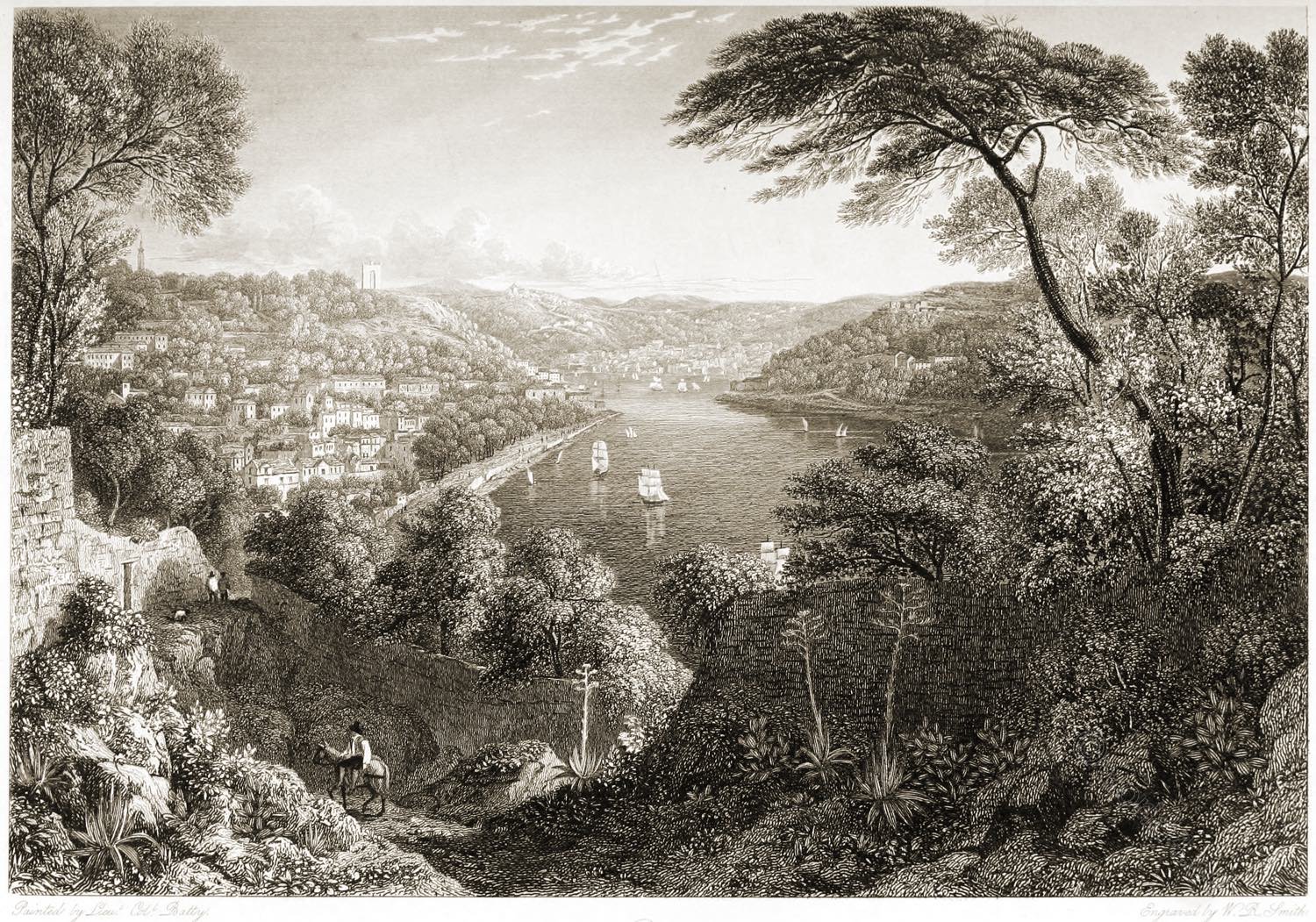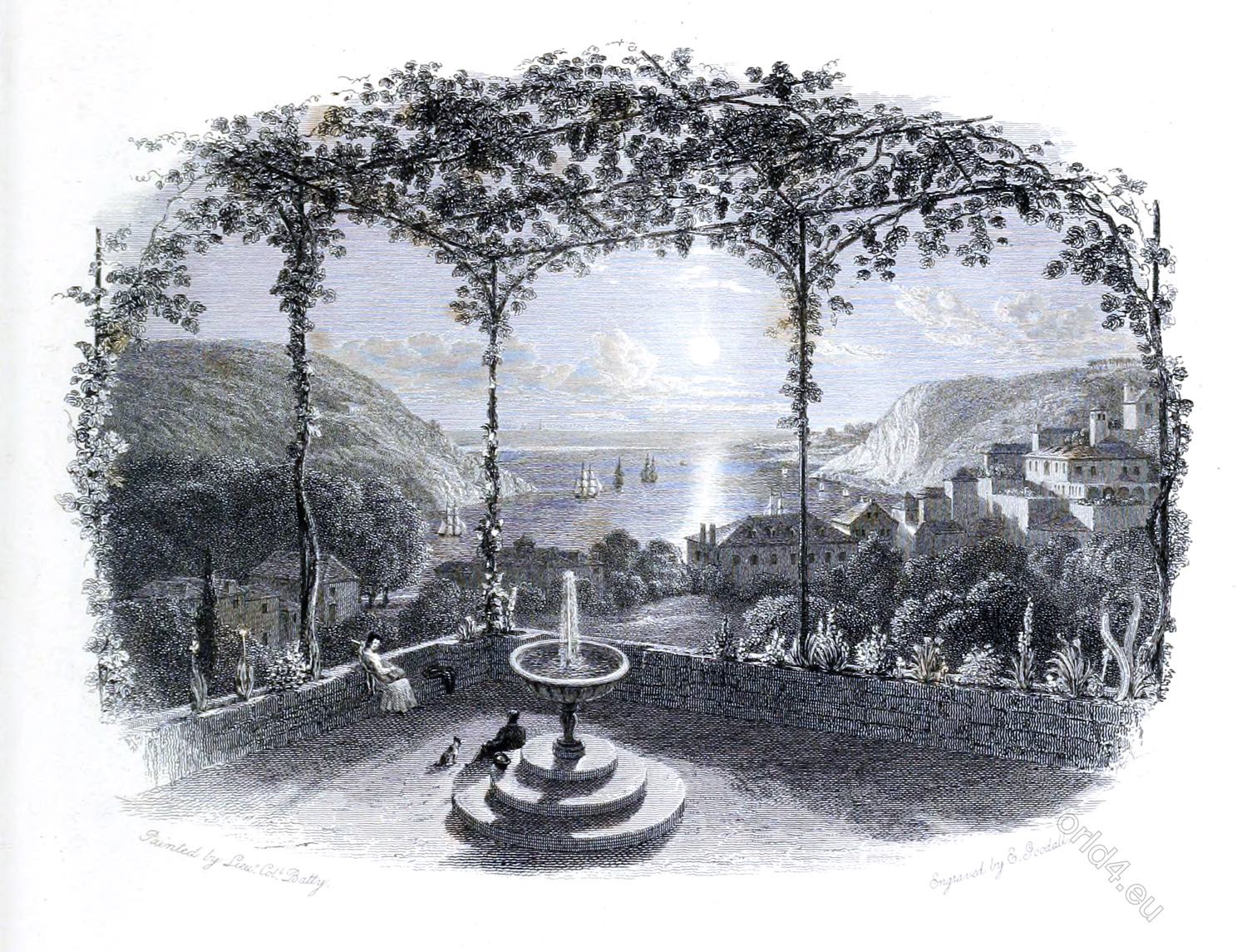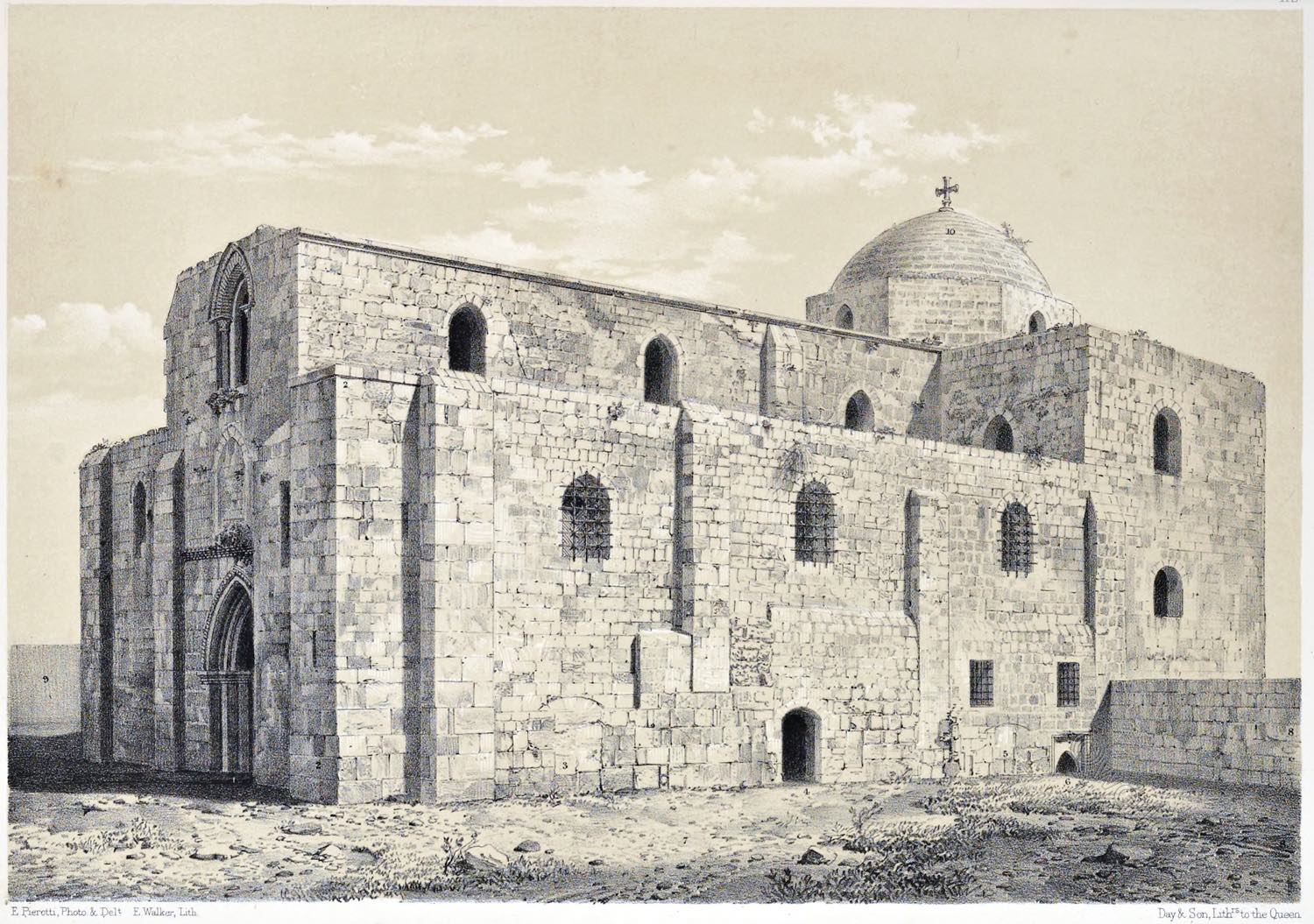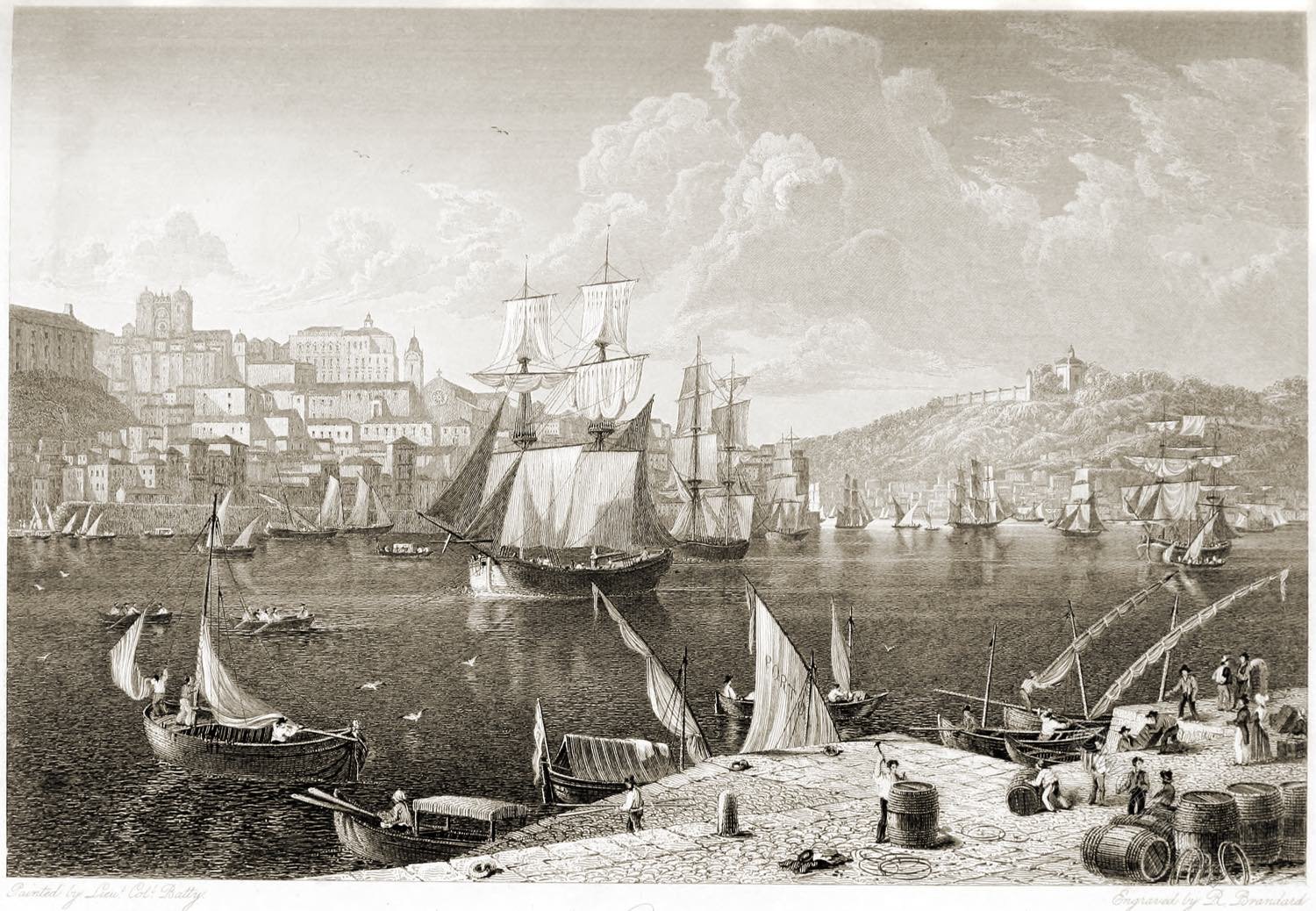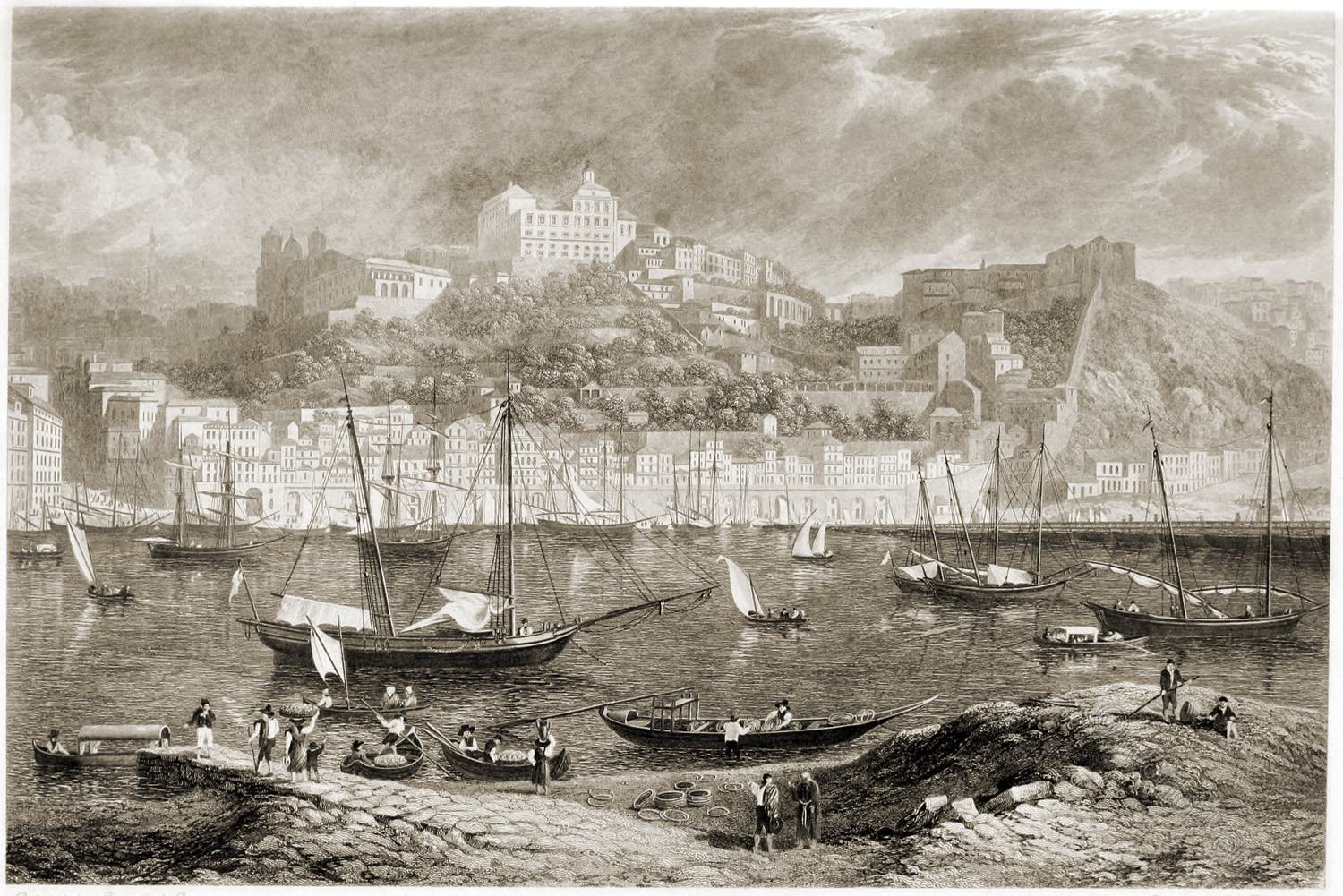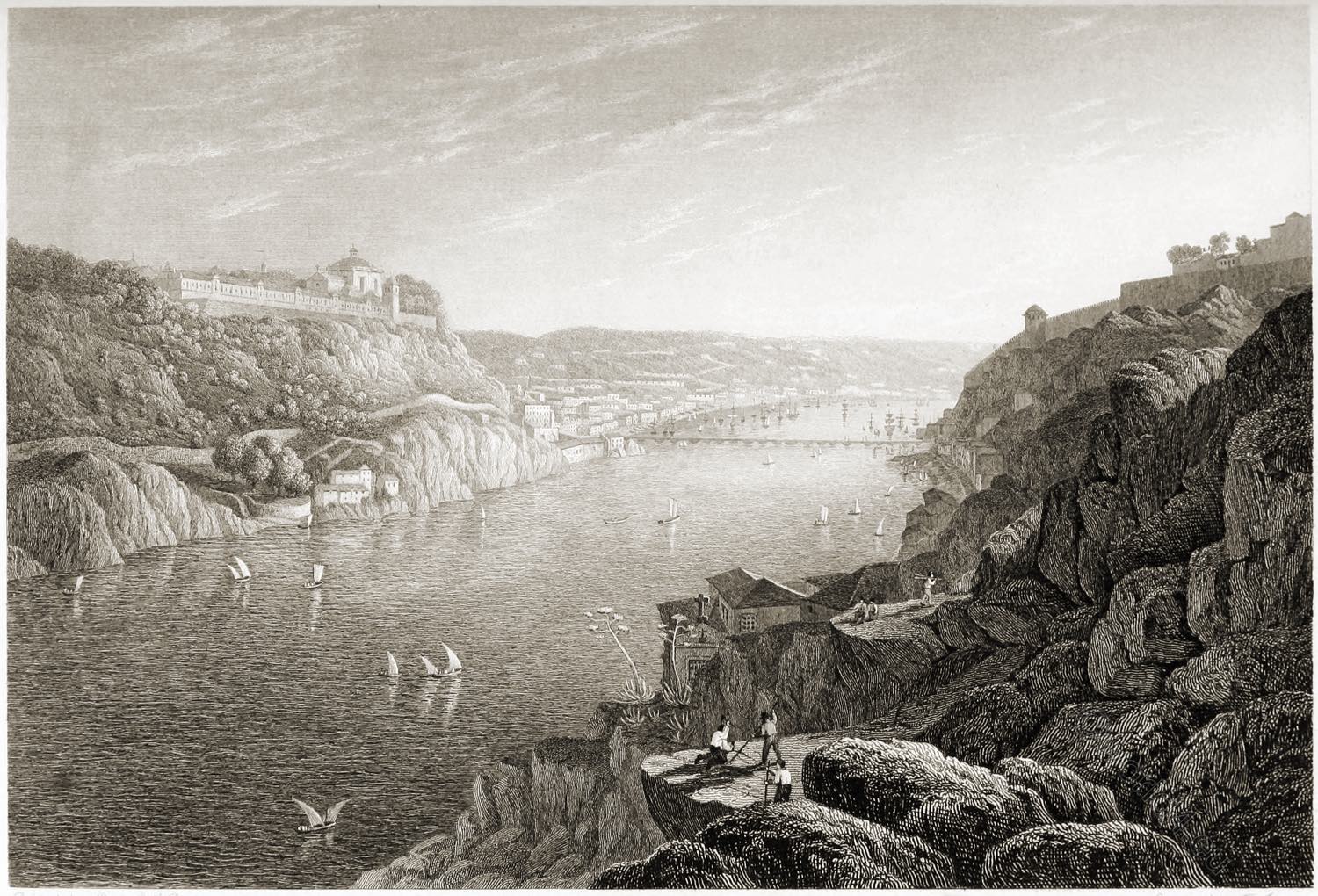
OPORTO. FROM FONTAINHAS.
Having exhibited the principal features of the scenery between the mouth of the Douro and the bridge of boats at the upper end of the city of Oporto, we have now a final view from the verge of the granite precipice on the north side of the river, at a short distance to the east of the city walls, which are seen on the right.
The left of the view is formed by a corresponding precipice of granite, on the point of which is the eminently seated Serra Convent. The Douro here flows with a rapid but smooth current between. The distance is closed by the heights of Villa Nova de Gaya.
The river, calm and placid as it generally appears, is, at times, subject to great and sudden rises; and though but little rain may have fallen in the neighbourhood of the city, the rains in the mountainous country, through which the Douro passes, cause unexpected inundations.
The current on these occasions becomes tremendous, bearing every thing before it with overwhelming violence. It has frequently happened that vessels have been dragged from their apparently secure anchorage, opposite the city, and wrecked on the bar.
These great floods are sometimes, however, not wholly unexpected, being preceded by violent gales from the west, creating a horrible surf on the bar, and forming, as it were, a sluice-gate, which prevents the issue of the waters into the sea.
The Douro has been known to rise twenty-two feet, on such occasions, penetrating into no less than eighteen streets, and inundating more than a thousand houses. The last great rise of the Douro was in the winter of 1822-3, when, for a short time, it reached the summit of the old wall adjoining the Custom-house Quay.
Source: Select views of some of the principal cities of Europe by Robert Batty. London: Moon, Boys, and Graves, 1832.
Continuing
OPORTO.
The Mouth of the Douro from Massarellos.
Oporto, from the Monte D’Arabida.
Oporto, from the Quay of Villa Nova.
Oporto, from the Custom-House Quay.
Oporto, from Fontainhas.
Discover more from World4 Costume Culture History
Subscribe to get the latest posts sent to your email.

